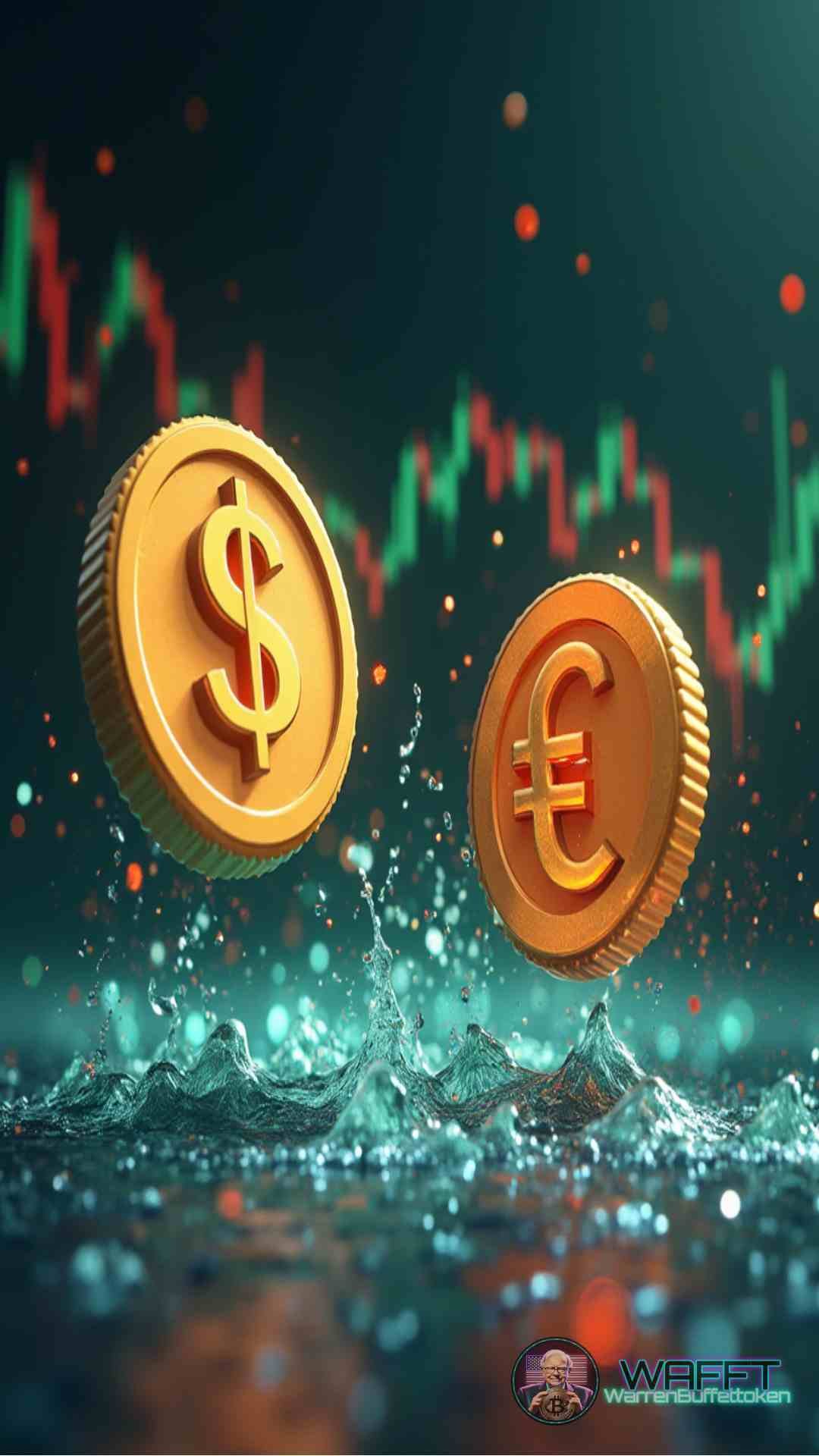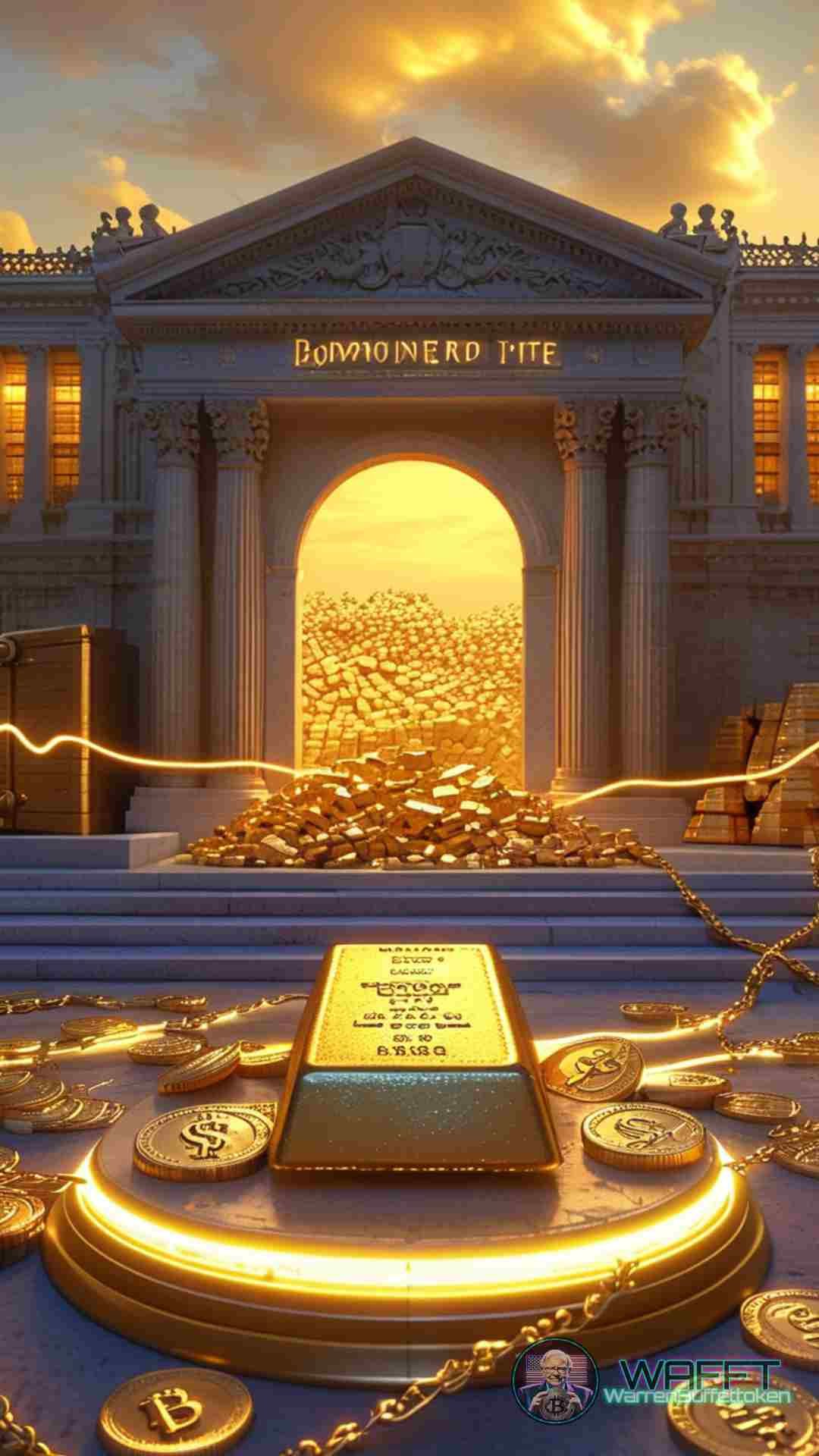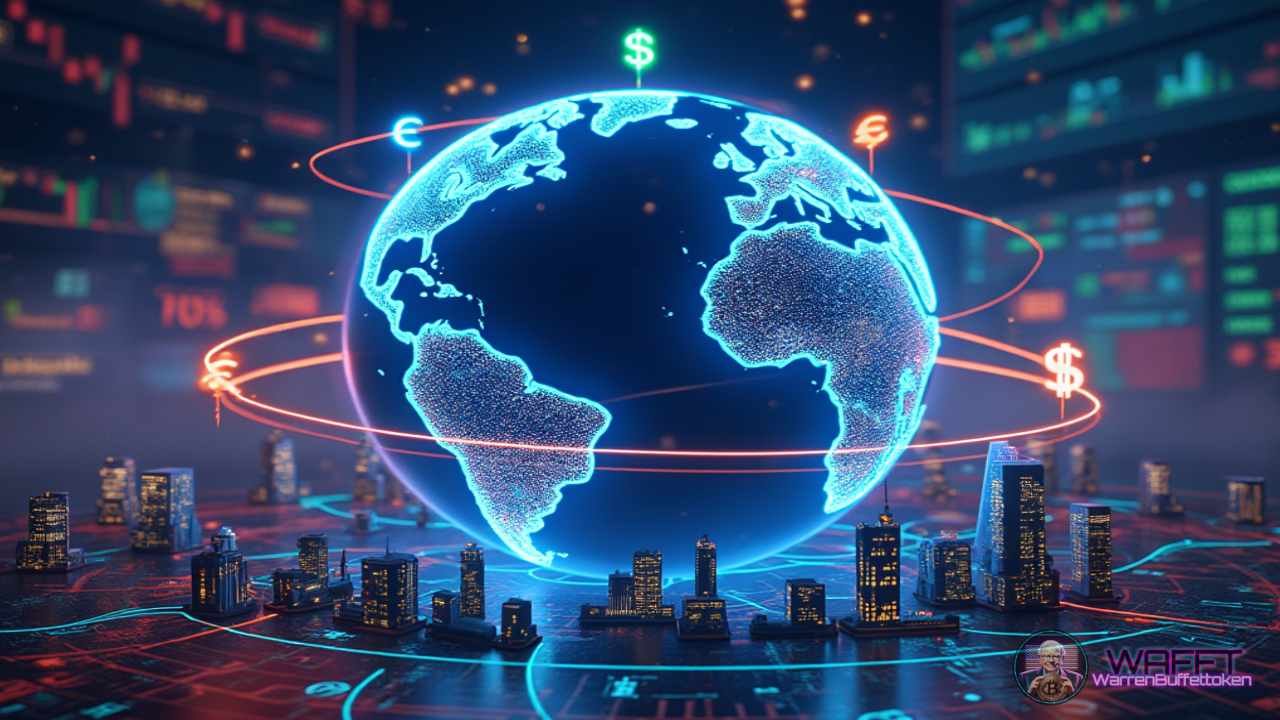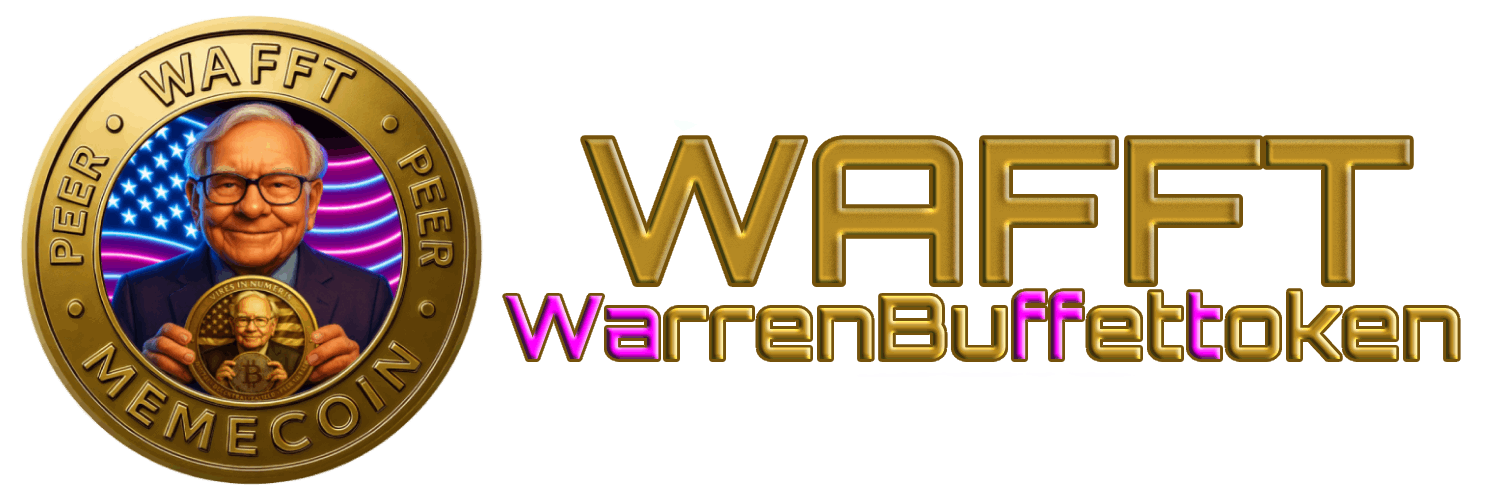Monetary System:
How does the money we use every day work? 💸🧐

Introduction: The Enigma of Money 💵
If you’ve ever wondered how money works, where it comes from, and why it’s so important to the world economy, you’ve come to the right place! We all use money, but few really know how the system that underpins it works. 🏦💰
A monetary system is basically the set of rules, institutions, and agreements that regulate the use of money in an economy. This system includes aspects such as money creation, monetary policy, regulation of exchange rates, and the role of central banks. 📊💼
In this article, I’ll take you on a tour of the history of the monetary system, how it has evolved, and how it works today. Ready to discover everything about money and how it works? 🚀
The History of the Monetary System: From Salt to Cryptocurrencies 🏛️💳
The concept of money did not always exist in the form we know it today. Throughout history, the monetary system has gone through many transformations.
Here are some key milestones in its evolution:
Barter: The Beginning of Everything 🐑🍞
Before money existed, people exchanged goods and services directly through barter. This means that if you were a farmer who grew wheat, you could exchange it for sheep, clothes, or anything else you needed. But of course, this system had many problems: people’s needs did not always match, and there was no common standard to measure the value of goods. Quite a logistical mess! 🤯
Commodity Money: Salt, Gold, and Other Valuable Forms of Payment 🌾💎
To solve the problems of barter, societies began using commodity money, which consisted of goods that had intrinsic value. Some historical examples include salt (which is where the word «wage» comes from), grain, and later, gold and silver.
Gold quickly became one of the most commonly used goods as money due to its rarity, durability, and ease of transport. For centuries, gold was the basis of many countries’ monetary systems. 🏅💰
The Gold Standard: The King of Monetary Systems 👑💛
The gold standard was the dominant monetary system during the 19th and 20th centuries. Under this system, coins and banknotes in circulation were backed by gold, meaning that anyone could, in theory, exchange their money for a fixed amount of gold.
This system brought stability because the value of money was tied to a scarce resource, which prevented governments from printing more money than they could back. However, it also limited countries’ flexibility to manage their economies in times of crisis. 📉
The gold standard began to fall apart after World War I, as countries needed more flexibility to print money to fund the war. Finally, in 1971, US President Richard Nixon dealt the final blow to the system by suspending the convertibility of the dollar into gold.
Goodbye, gold standard! 👋
The Modern Monetary System: Fiat Money and Floating Exchange Rates 💸🌐
Today, most countries use what is known as fiat money. This type of money has no intrinsic value nor is it backed by a physical asset like gold. Its value is based solely on the trust people have in their government and the central bank that issues it. If you trust that your $100 bill is going to buy the same thing today as it will tomorrow, then it works.
Instead of having fixed exchange rates (like in the gold standard system), we now have floating exchange rates, where the value of a currency is determined by supply and demand in global financial markets. This gives governments much more flexibility in managing their economy, but it also introduces more volatility. 📉📈
Key Elements of the Modern Monetary System 📊💳
Now that we know a little bit of history, let’s talk about the key components that make up the current monetary system.
The modern monetary system is like a huge global network where money travels from one place to another at full speed, without the need for gold or silver backing. 🏦💰 It’s all based on trust, technology, and a lot of institutions that keep things under control (or at least try to). If you’ve ever wondered how money works today, here are the most important elements of this exciting financial world! 🎢
1. Fiat Currency: Money for its own sake 💵
Nowadays, the money you use doesn’t have value because it’s made of something valuable like gold, but because the government says it does. This system is called fiat currency. What does this mean? That money has value because we all trust that it has value and accept it to buy things or pay for services. 🤝💳
This modern system gained momentum after the gold standard was abandoned in the 1970s, when the dollar was no longer backed by gold. Now, governments have much more control over their economies, which can be positive or negative, depending on how they run things. For example, printing too much money can cause inflation (it drives up the prices of everything!). 😓
2. Central Banks: The Guardians of Money 🏦🔑
Central banks are the institutions that run the show. They are the «bosses» of the monetary system. 👑 They’re in charge of super important things like controlling the money supply, deciding on interest rates, and making sure the financial system doesn’t collapse (or at least try to).
🎯How do they do it?
Monetary Policy:
This is their most powerful tool. If the economy is too slow, central banks can lower interest rates to make borrowing cheaper and people spend more. Money starts flowing! Conversely, if the economy is too fast and there’s a risk of inflation, they raise interest rates to make borrowing more expensive and cool things down a bit. 🔥❄️
Quantitative Easing (QE):
When things get ugly (like the 2008 financial crisis), central banks go into superhero mode. 🦸♀️ 🦸♂️ They pump money into the economy by buying bonds and other assets. So, they put more liquidity into the market so that the financial system doesn’t collapse.
Inflation control:
Inflation is like the villain in the central bank movie. 🦹♂️ If prices rise too fast, people lose purchasing power. The central bank steps in to keep it in check, but they don’t want it to go too low either, because a little inflation is good for a healthy economy. Balance is key. 🎢
Financial stability:
In addition, central banks must ensure that there are no financial disasters. Regulating banks and monitoring that they are not lending too much money wildly is part of their job. It’s like the policeman trying to keep order in the wild west of the financial system. 👮♀️💼
Some of the most important central banks in the world are the US Federal Reserve (the Fed), the European Central Bank (ECB), and the Bank of England. Depending on how they act, they can influence the global economy. Can you imagine that a single decision can affect the prices of products around the world? 🌎💥
3. Floating Exchange Rate System: The Back and Forth of Money 💱🌊
Today, currencies don’t have a fixed value. The value of currencies fluctuates depending on what happens in the market. So one day your currency may be worth more against the dollar and the next day less. It’s like a roller coaster! 🎢

This floating exchange rate system was implemented after the collapse of the Bretton Woods system in 1971. Since then, the supply and demand of currencies determines their value. Who decides? Well, everyone who participates in the financial markets by buying and selling currencies. Countries with strong and stable economies tend to have stronger currencies. 💪🌍
Some countries, however, prefer to keep their currencies stable against another currency, such as the dollar. To do this, they have a fixed exchange rate system or link their currency to a major currency. This reduces the risk of volatility, but also limits their ability to react to crises. ⚖️
4. Financial Intermediaries: The Ones Who Keep Money Moving 🏦💸
Commercial banks and other financial intermediaries are the ones who keep money moving through the economy. They accept deposits from people like you and me, and then use that money to lend to other people or businesses. That way, they keep the wheels turning. 🚲💶
But today, it’s not just traditional banks that are important. Fintechs are revolutionizing the game. 💻📱 Companies like PayPal, Revolut, and many others allow you to make payments, get loans, and manage your finances from your phone. Welcome to the future! 🚀
5. Global Financial Markets: Where Money Never Sleeps 🌐💼
The modern monetary system can’t function without global financial markets. This is where currencies are exchanged, bonds are issued, and company stocks rise and fall. 🌍💹
The foreign exchange market is the largest in the world, moving trillions of dollars every day. Yes, trillions! 💥 Dollars, euros, yen, pounds, and many other currencies are traded here. Through these markets, governments, companies, and individuals can access capital and invest in projects. 📊
6. International Financial Regulation: The rules of the game ⚖️🌏
Although the financial system is gigantic, it is not lawless chaos (well, not always). There are institutions like the International Monetary Fund (IMF) and the World Bank that set the rules to ensure that everything works as well as possible. They help avoid serious imbalances and support countries in crisis. 🛠️🤝
In addition, in many countries, governments have bodies that regulate banks and financial markets to prevent abuses and prevent local problems from becoming a global crisis.
7. Digital Money and Cryptocurrencies: The New Kid on the Block 🌐🪙
We can’t talk about the modern monetary system without mentioning cryptocurrencies like Bitcoin and Ethereum. They are forms of money that are not controlled by governments or central banks. They use blockchain technology to maintain a decentralized and transparent system. 📲🖧
Although they are not the main means of payment for now, the impact of cryptocurrencies is growing. In addition, some countries are already exploring CBDCs (Central Bank Digital Currencies),which could become an official form of digital money.
8. The Role of Credit and Debt: The Fuel of the Economy 🏦💳
Finally, credit and debt play a fundamental role. Without loans, people would not be able to buy houses, businesses would not be able to expand, and governments would not be able to finance infrastructure. But, as always, one must be careful: too much debt can lead to major crises, like the one we saw in 2008. 😬
Conclusion
The modern monetary system is a huge and complex machine that keeps the global economy running. From central banks to fintechs and cryptocurrencies, each piece plays a crucial role. While it has its challenges (such as avoiding financial crises and adapting to technological changes), it is a system that is constantly evolving. And we are in the middle of this revolution! 💥
International Monetary Systems and Their Global Impact 🌍💸
The world of money is like a giant network where each country has its own «set of currencies,» but they are all interconnected in some way. 🎲💰 International monetary systems are the rules and agreements that countries use to manage trade, money flows, and investments between them. But not everything is as simple as it seems. Throughout history, we have seen different monetary systems, each with its pros and cons, that have deeply affected the global economy.
Let’s explore some of the most important systems and how they have influenced the world. 🚀🌎
1. The Gold Standard: The Golden Age of Money 💰✨
The Gold Standard was one of the first international monetary systems. Under this system, the currencies of many countries were backed by a fixed amount of gold. For example, if a country issued banknotes, these banknotes could be exchanged for a specific amount of gold. Thus, all money in circulation had a tangible value based on the precious metal. 🏆💵
Why did it work?
It provided stability because the value of money was tied to something physical and scarce, gold. You couldn’t print more money than a country had in gold reserves. 📉
Problems?

When a country faced an economic crisis, it couldn’t simply «create more money» to tide itself over, as the money depended on its gold reserves. This could slow economic growth and, in many cases, worsened recessions. 😓
In the end, the Gold Standard didn’t survive. After world wars and economic crises, countries abandoned it because they needed more flexibility to manage their economies (i.e., generate money out of nothing🫣). 📉 In the 1970s, the world definitively left the Gold Standard, opening the door to more flexible monetary systems.
2. The Bretton Woods System: The Dollar Reigns 👑💵
After World War II, in 1944, countries met at the Bretton Woods conference to create a new financial system that would ensure global stability. This is how the Bretton Woods system was born. Under this system, currencies were pegged to the US dollar, which in turn was backed by gold (at least in theory).
Why did it work?
Countries kept their exchange rates fixed against the dollar. If they needed to adjust their economy, the IMF (International Monetary Fund) was there to help. 📏
The dollar became the dominant currency for international trade and foreign exchange reserves. 🇺🇸💵 Countries relied on the stability of the US, which allowed them to conduct international business more smoothly.
Problems?
The system relied heavily on the US holding enough gold to back the dollar. But as the US economy expanded and its deficit increased, the dollar lost its direct relationship to gold. Finally, in 1971, President Nixon broke this link, marking the end of the Bretton Woods system and giving rise to floating exchange rates. 🎢
3. Floating Exchange Rates: Let the market decide! 💹💼
After the collapse of Bretton Woods, the world adopted a system of floating exchange rates. Basically, the value of currencies was no longer fixed; instead, the market decided their value based on supply and demand. 💱
Exchange rates fluctuated based on economic, political, and market factors.
Advantages
Countries had more freedom to control their economic policies, especially during crises or recessions. They could adjust their currency to make their products cheaper (or more expensive) on the international market. 🌍📉
Disadvantages
Volatility! Currencies can change value quickly, which can cause instability, especially for countries that rely on international trade. 🌪️
For example, if a country’s currency becomes too devalued, the prices of its imports can skyrocket. Or, if it rises too much, its exports become too expensive for other countries. 😬

4. Financial Globalization: Money without Borders 💸✈️
In recent decades, we have seen an explosion in financial globalization. This means that money and investments no longer stay within national borders; they can easily flow between countries. 🏦💳
Today, investors around the world can buy Japanese government bonds, invest in European companies, or do business with a startup in Silicon Valley from anywhere on the planet. 🌐💼 International financial markets are more connected than ever, which has many advantages:
Investment diversification:
Investors can put their money in different countries and sectors, reducing the risk of losing everything if a specific market crashes. 📊
Access to capital:
Companies and governments can raise funds more easily, attracting investments from around the world for infrastructure, technology, or innovation projects. 🏗️
But beware, this globalization also has its risks. Financial crises in one country can have ripple effects, spreading quickly across international markets.
🌍⚠️ A clear example was the 2008 financial crisis, which began in the US with the collapse of the housing market and spread across the world.
5. The Impact of Cryptocurrencies: Decentralization to Power 🪙🌐
The 21st century has brought us a new player on the monetary systems scene: cryptocurrencies. 🔥💻 Bitcoin, Ethereum, and other digital currencies have revolutionized the way we think about money, especially since they are not controlled by any government or central bank. 🚫🏦
Advantages
- Decentralization: Cryptocurrencies operate on decentralized networks, meaning no one can fully control them.Plus, transactions are fast and secure thanks to blockchain technology. 📲🛡️
- Low cost of international transactions: Sending money to another country using cryptocurrencies can be much cheaper and faster than doing so through the traditional banking system. ✈️💸
Cons
- Extreme volatility: Cryptocurrencies are incredibly volatile. One day, Bitcoin can be worth $60,000 and the next, $30,000! 🎢💥 This makes it risky to use them as a reliable form of money.
- Uncertain regulation: Many governments are trying to figure out how to regulate cryptocurrencies, as they could facilitate illegal activities or not be sufficiently protected for users. 😓⚖️
6. An Interconnected World: The Future of Monetary Systems 🌐🔮
As we move into the future, monetary systems will continue to change and adapt to new technologies and global challenges. CBDCs (Central Bank Digital Currencies) are one of the most exciting developments in this area.(Although that means less privacy📡😠) Several countries, including China and Sweden, are already experimenting with digital currencies controlled by their central banks to modernize their payment systems. 💳💡
In addition,sustainability and environmental impact are becoming more important in monetary decisions. Central banks are beginning to consider how climate change can affect financial stability and are taking steps to include this factor in their policies. 🌍🌱
Conclusion
International monetary systems have been and will continue to be a powerful force shaping the global economy. From the Gold Standard to cryptocurrencies, we have seen how different systems have had a profound impact on trade, investment and global stability. The future will be increasingly digital and global, but it will also be full of complex challenges that will need to be managed to maintain financial stability.
The Future of the Monetary System: Cryptocurrencies and Digitalization 🪙💻

The global monetary system is entering a new era 🚀, driven by cryptocurrencies and the increasing digitalization of finance. From early digital currencies like Bitcoin to more recent central bank digital currency (CBDC) initiatives, the financial landscape is undergoing rapid and profound changes.
1. Cryptocurrencies: Decentralization and financial freedom 🌐🔓
Cryptocurrencies like Bitcoin and Ethereum have captured global attention for their decentralization and potential to revolutionize the way we understand money. 🌍🪙 Not being controlled by governments or traditional financial institutions, these currencies allow for fast, secure, and in many cases cheaper transactions than traditional systems. 📲✨
But not everything is rosy. 🌹 Cryptocurrencies are also known for their high volatility 🎢, which makes investing in or using these currencies risky. In addition, the lack of clear regulation in many countries creates uncertainty, both for users and for governments seeking to control their impact.
Still, the appeal of a freer and more transparent financial system remains strong, and some experts believe that cryptocurrencies could become a complement or even an alternative to traditional monetary systems. 🏦🚫
2. Central Bank Digital Currencies (CBDCs): The «official» digital money 💳🏦
Faced with the rise of cryptocurrencies, many central banks have begun to research and develop their own digital currencies. These CBDCs would combine the best of both worlds: the security and trust of traditional currencies, along with the technological advantages of cryptocurrencies. 🌐🔒
Countries like China and Sweden are already testing their own versions of CBDCs, aiming to improve payment efficiency, reduce transaction costs, and allow for more direct control over monetary policy. 💹📈
Unlike decentralized cryptocurrencies, CBDCs would be under the control of central banks, giving governments more tools to regulate the economy and combat problems like money laundering or tax evasion. However, it also raises concerns about privacy and the potential abuse of power by governments having access to more personal financial data. 🕵️♂️⚖️
3. The future of money: Hybrid or completely digital? 🔮💡
As we move into the future, it seems likely that the global monetary system will become a hybrid model, where traditional currencies coexist with cryptocurrencies and CBDCs. Digital transactions will continue to grow, and the use of cash is likely to decline. 💸📉
The big challenge will be to find the balance between technological innovation and financial stability. Cryptocurrencies offer exciting opportunities, but their lack of regulation and stability remains a major obstacle. CBDCs could provide a more controlled alternative, but their large-scale implementation still faces several technical and political challenges.
Conclusion:
The Monetary System, a Dynamic and Evolving Ecosystem 🏦🔄
The monetary system is a crucial cog in the machinery of the global economy. From barter to cryptocurrencies, it has evolved over the centuries to adapt to the changing needs of societies. Although monetary systems may seem complex, at their core they are based on something very simple: trust. 🌱💡
Whether we are talking about gold, paper bills or digital money, the stability of a monetary system depends on the trust that people, investors and countries have that it will work fairly and efficiently. With globalization and digitalization advancing, the future promises even faster and more astonishing changes.
So, the next time you take a bill out of your wallet, remember: behind that little piece of paper are centuries of history, politics and economics. And the future of money has only just begun! 🚀🌍


